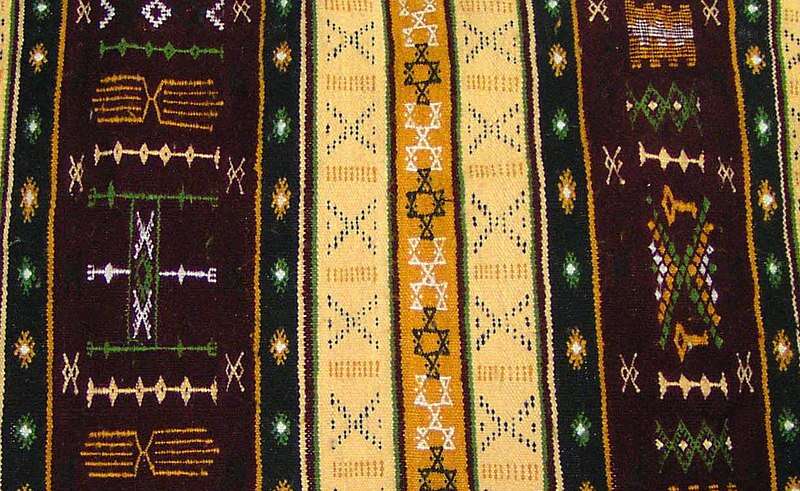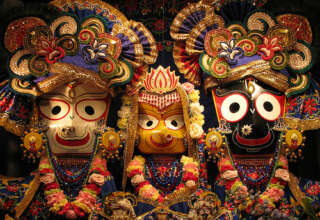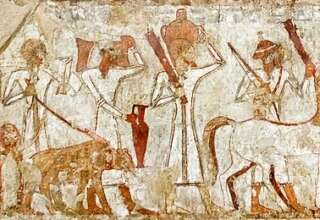
Geography and Economy
Tunisia’s climate is Mediterranean in the north, with mild rainy winters and hot, dry summers. The south of the country is desert. The terrain in the north is mountainous, which, moving south, gives way to a hot, dry central plain. The south is semiarid and merges into the Sahara.
Though it is relatively small in size, Tunisia has great environmental diversity due to its north–south extent. Its east–west extent is limited. Differences in Tunisia, like the rest of the Maghreb, are largely north–south environmental differences defined by sharply decreasing rainfall southward from any point. The Dorsal, the eastern extension of the Atlas Mountains, runs across Tunisia in a northeasterly direction from the Algerian border in the west to the Cape Bon peninsula in the east. North of the Dorsal is the Tell, a region characterized by low, rolling hills and plains, again an extension of mountains to the west in Algeria. In the Khroumerie, the northwestern corner of the Tunisian Tell, elevations reach 1,050 metres (3,440 ft) and snow occurs in winter. The Sahel, a broadening coastal plain along Tunisia’s eastern Mediterranean coast, is among the world’s premier areas of olive cultivation. Inland from the Sahel, between the Dorsal and a range of hills south of Gafsa, are the Steppes. Much of the southern region is semi-arid and desert. Tunisia is the eighteenth most water-stressed country in the world.
Ranked the most competitive economy in Africa by the World Economic Forum in 2009, Tunisia is an export-oriented country in the process of liberalizing and privatizing an economy that, while averaging 5% GDP growth since the early 1990s, has suffered from corruption benefiting politically connected elites. Tunisia’s Penal Code criminalizes several forms of corruption, including active and passive bribery, abuse of office, extortion, and conflicts of interest. However, the anti-corruption framework is not effectively enforced. Nevertheless, according to the Corruption Perceptions Index published annually by Transparency International, Tunisia was ranked the least corrupt North African country in 2016, with a score of 41.
Tunisia has a diverse economy, ranging from agriculture, mining, manufacturing, and petroleum products, to tourism, which accounted for 7% of the total GDP and 370,000 jobs in 2009. In 2008, it had an economy of US$41 billion in nominal terms, and $82 billion in PPP. The agricultural sector accounts for 11.6% of the GDP, industry 25.7%, and services 62.8%. The industrial sector is mainly made up of clothing and footwear manufacturing, production of car parts, and electric machinery. Although Tunisia managed an average 5% growth over the last decade, it continues to suffer from a high unemployment rate, especially among youth. The European Union remains Tunisia’s first trading partner, currently accounting for 72.5% of Tunisian imports and 75% of Tunisian exports. Tunisia is one of the European Union’s most established trading partners in the Mediterranean region and ranks as the EU’s 30th largest trading partner.
Tunisia was ranked 81st in the Global Innovation Index in 2024. Tunisia has achieved the highest access rates to water supply and sanitation services in the Middle East and North Africa. As of 2011, access to safe drinking water became close to universal approaching 100% in urban areas and 90% in rural areas. Tunisia provides good quality drinking water throughout the year.
Demographics
According to the CIA, as of 2021, Tunisia has a population of 11,811,335 inhabitants. The government has supported a successful family planning program that has reduced the population growth rate to just over 1% per annum, contributing to Tunisia’s economic and social stability. According to the CIA World Factbook, ethnic groups in Tunisia are: Arab 98%, European 1%, Jewish and other 1%. According to the 1956 Tunisian census, Tunisia had a population at the time of 3,783,000 residents, 95% consisting of Arabs and Berbers, 256,000 Europeans and 105,000 Jews. Speakers of Berber dialects were 2% of the population. Black Tunisians make up 10–15% of the population and are mostly descended from sub-Saharan Africans brought to Tunisia as part of the slave trade.
From the late 19th century to the period after World War II, Tunisia was home to large populations of French and Italians (255,000 Europeans in 1956), although nearly all of them, along with the Jewish population, left after Tunisia became independent. The history of the Jews in Tunisia goes back some 2,000 years. In 1948, the Jewish population was estimated at 105,000, but by 2013 only about 1000 remained.




